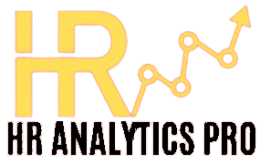Agile HR
February 28, 2024 2024-03-01 14:41Agile HR
Agile HR
What is Agile HR?
Agile HR is a approach to managing and delivering Human Resources (HR) services that is based on the principles of agility. It is designed to help HR teams respond quickly and flexibly to changing business needs, employee needs, and other factors.
Some Key Features of Agile HR may include:
- Emphasis on Collaboration and Communication: Agile HR teams work closely with other departments and stakeholders to ensure that HR services are aligned with business goals.
- Flexibility and Adaptability: Agile HR teams are able to adapt quickly to changes in the business environment, employee needs, and other factors.
- Incremental Delivery: Agile HR teams work in short cycles, called “sprints,” and deliver small increments of HR services at regular intervals.
- Focus on Employee Needs: Agile HR teams prioritize meeting the needs of employees and respond quickly to feedback.
- Use of Agile Tools and Techniques: Agile HR teams may use tools such as user stories, agile estimation, and agile planning to plan and execute their work.
Agile HR is often contrasted with more traditional, “waterfall” approaches to HR management, which are more structured and linear. The Agile HR approach is becoming increasingly popular in a variety of organizations and industries, as it allows HR teams to be more responsive and effective in meeting the needs of the business and its employees.
What are the Benefits?
Some potential Benefits of adopting an Agile HR approach may include:
- Increased Flexibility and Adaptability: Agile HR allows HR teams to respond quickly and effectively to changing business needs and employee needs, which can help the organization stay competitive and responsive in a fast-paced environment.
- Enhanced Collaboration and Communication: Agile HR emphasizes regular communication and collaboration between HR teams, other departments, and stakeholders, which can lead to better alignment of HR services with business goals.
- Improved Efficiency and Productivity: Agile HR allows HR teams to deliver services in smaller increments, which can lead to greater efficiency and productivity.
- Greater Employee Satisfaction: By focusing on meeting the needs of employees and responding quickly to feedback, Agile HR can help improve employee satisfaction and retention.
- Increased Transparency and Accountability: Agile HR emphasizes regular check-ins and progress updates, which can help increase Transparency and Accountability within the HR team and across the organization.
Overall, the Benefits of Agile HR will depend on the specific needs and circumstances of the organization and its employees. It is important for HR teams to carefully consider the potential benefits and drawbacks of the Agile approach before deciding whether to adopt it.
What are the Drawbacks?
While the Agile HR approach can offer many Benefits, there are also some potential Drawbacks to consider:
- Increased Complexity: Agile HR can require a more complex and dynamic approach to HR management, which may require additional training and resources.
- Potential Cultural Shift: Adopting an Agile HR approach may require significant changes to the way HR teams work and interact with other departments and stakeholders, which can be challenging and may require a shift in organizational culture.
- Increased Risk of Misunderstandings: Agile HR emphasizes regular communication and collaboration, but it can also increase the risk of misunderstandings or miscommunications if not properly managed.
- Difficulty with Long-term Planning: The Agile approach is designed to be flexible and responsive to change, which can make it more difficult to plan for long-term projects or initiatives.
- Possible Resistance from Employees: Some employees may be resistant to the changes that Agile HR can bring, and may need time and support to adjust to the new approach.
Overall, the potential Drawbacks of Agile HR will depend on the specific needs and circumstances of the organization and its employees. It is important for HR teams to carefully consider the potential Benefits and Drawbacks of the Agile approach before deciding whether to adopt it.
What are the steps involved in implementing?
The process of Agile HR will vary depending on the specific needs and goals of the organization, as well as the size and structure of the HR team. However, some general steps that may be involved in implementing Agile HR in an organization may include:
- Defining the Goals and Objectives of the Agile HR Initiative: This may involve identifying the specific challenges or opportunities that the organization hopes to address through the Agile HR approach, as well as the Key Performance Indicators (KPIs) that will be used to measure success.
- Assessing the Readiness of the Organization for Agile HR: This may involve evaluating the current HR processes, systems, and culture to determine whether they are conducive to an Agile approach. It may also involve identifying any potential barriers or challenges to implementing Agile HR.
- Developing an Agile HR Roadmap: This may involve creating a plan for how the organization will transition to an Agile HR approach, including key milestones, timelines, and resources required.
- Establishing Agile HR Teams and Roles: This may involve setting up cross-functional teams that are responsible for delivering HR services in short cycles, as well as defining roles and responsibilities within the teams.
- Implementing Agile HR Tools and Techniques: This may involve introducing tools and techniques such as agile estimation, user stories, and agile planning to support the Agile HR process.
- Reviewing and Adjusting the Agile HR process: As the organization gains experience with Agile HR, it may be necessary to review and adjust the process to ensure that it is meeting the needs of the organization and its employees. This may involve conducting regular check-ins and progress updates, as well as soliciting feedback from employees and stakeholders.
Overall, the process of implementing Agile HR will require careful planning, collaboration, and a willingness to be flexible and adaptable as the organization learns and evolves.






